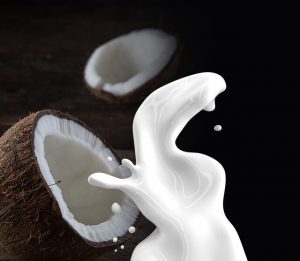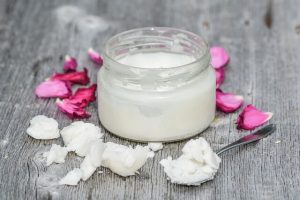Share
4 incredible coconut-derived ingredients
Coconut was and still is known to be the famous Asian tropical fruit and the most important plant species in the region. But in addition to being something edible, it can perform other functions such as providing many nutrient-packed extractions. Come and discover with us the 4 fascinating products derived from this fruit and their uses.
List of foods derived from the coconut :
coconut oil

Coconut oil is one of the most famous forms and uses of coconuts. The oil is extracted from the kernel of ripe coconut s harvested from the coconut tree and is rich in saturated fats. This oil is produced by grinding copra and has been consumed in tropical countries for thousands of years. Global coconut oil production has increased over the past decade, primarily due to increased global demand for the important characteristics of this oil . Copra, whether shipped to overseas countries or processed locally, is the almost exclusive raw material for coconut oil production.
The processing of the oil involves three stages: pre-treatment, extraction and post-extraction. Conventional extraction methods are pressing or solvent extraction. A combination of the two – expeller with solvent – is also performed in some plants, as it is difficult to quantitatively extract oil from copra in a single process.
Another extraction method frequently used to achieve a high oil yield is double pressing with a hydraulic press or expellers. The wet process of extracting this oil is gaining popularity and studies have been conducted to compare dry and wet extracted oils. This marvelous oil has many uses that have nothing to do with its consumption. Many people use it for cosmetic purposes to improve the health and appearance of the body …
coconut milk

coconut water is the liquid inside a coco , while coco milk comes from the white flesh of the fruit. This derived ingredient should not be confused with coco water, which is found primarily in immature green coco s. Unlike coco water, milk does not occur naturally. Instead, the flesh of this solid fruit is mixed with water to make it , which contains about 50% water.
In turn, this extracted product contains about 94% water. It contains less fat and nutrients than coco milk. This product has recently become very well known. It is a tasty alternative to cow’s milk that can also offer many benefits to the body. It can be made in 2 forms: thick or thin. When making thick milk, manufacturers grate the flesh of ripe coconut s, then use the technique of pressing through a cheesecloth to extract the liquid. Thick milk retains more fat than thin milk.
Thin coconut milk comes from the pressed coconut flesh left in the cheesecloth. Manufacturers mix it with warm water, then strain it through a cheesecloth for the second time. The resulting liquid is much finer. We should note that it contains high levels of saturated fat, making it a very high calorie food. The milk is also rich in vitamins and minerals, while the nutritional content varies depending on the product. coconut milk drinks, for example, have a different nutritional character than the one found in cans.
coconut cream

Coconut cream , being the key ingredient for making coconut juice drinks, is easily perishable due to its high water content, high fat content and low acid content. Another natural phenomenon of coconut cream is the rapid separation of fats which makes the product less attractive when standing.
Common processes used to produce safe, shelf-stable beverages involve heating or adjusting the pH, both of which can affect the flavor, color and texture of coconut cream. This extracted product an excellent source of vitamins and minerals, which can help improve cholesterol levels and avoid the risk of heart attack and stroke.
coconut Milk Powder
Coconut milk powder is a great shelf-stable ingredient for dry applications, confectionery items or any recipe that calls for coco milk. It has all the characteristics of the milk, except that it is a powder. It can be mixed with water to make as little or as much coco milk as you need, and as thin or thick as you like.
It usually comes in space-saving packets or sometimes in cans. Not only can it be reconstituted with water to make an easy and affordable substitute for canned or boxed coco milk, but it can also be sprinkled into smoothies before blending or whipped into a sweet frosting for cakes or donuts.
The multiplicity and versatility of the coco-palm’s product uses can be best judged by an Indonesian saying: “There are as many uses for the coco as there are days in the year,” given its amazing ability to provide food, beverages, cosmetics, medicinal and industrial uses and more. What about you, did you already know about these products? If so, have you ever tried any?
Don’t forget to share your story with this nature’s wonder and how does it help you in your skin care jouney and well being as well.
To Read: 2 digestion processes to learn about
